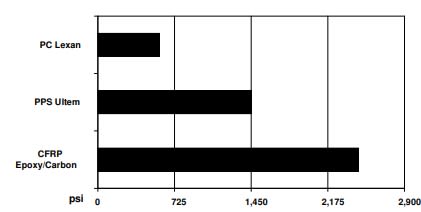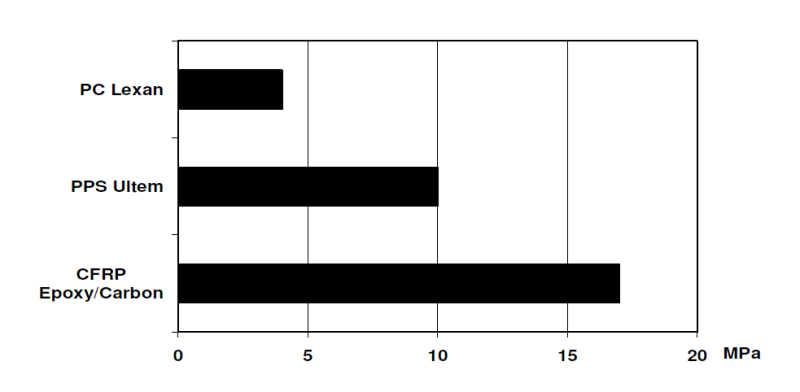Enhanced TDS
Identification & Functionality
- Chemical Family
- RTU Product Type
- Technologies
- Product Families
Features & Benefits
- Labeling Claims
- Ready-to-Use Product Features
- Features and Benefits
- Two component epoxy adhesive
- Meets FST Requirements - Self Extinguishing
- Room temperature curing
- Product Features
- Outstanding FST properties (complying with FAR 25.853)
- Semi-rigid adhesive with high elongation at break
- Long pot life at RT
- Suitable for structural application on metal or plastic substrates
- Non halogenated
- Dark grey paste
- Thermoplastic Bonding
- RT cure
- Product Properties
- Two component epoxy adhesive
- Flame retardant
- Room temperature curing
Applications & Uses
- Application Area
- Compatible Substrates & Surfaces
- Markets
- Applications
- Processing Information
Pretreatment
- The strength and durability of a bonded joint are dependant on proper treatment of the surfaces to be bonded.
- At the very least, joint surfaces should be cleaned with a good degreasing agent such as acetone or other proprietary degreasing agents in order to remove all traces of oil, grease and dirt. Alcohol, gasoline (petrol) or paint thinners should never be used.
- The strongest and most durable joints are obtained by either mechanically abrading or chemically etching (“pickling”) the degreased surfaces. Abrading should be followed by a second degreasing treatment.
- Processing Information
Pretreatment The strength and durability of a bonded joint are dependant on proper treatment of the surfaces to be bonded. At the very least, joint surfaces should be cleaned with a good degreasing agent such as acetone or other appropriate degreasing agent in order to remove all traces of oil, grease and dirt. Alcohol, gasoline (petroleum) or paint thinners should never be used. The strongest and most durable joints are obtained by either mechanically abrading or chemically etching (“pickling”) the degreased surfaces. Abrading should be followed by a second degreasing treatment.
Araldite® 1570 FST A/B is available in bulk and in 200ml cartridges for ease of mixing and application.
Application : The resin/hardener mix may be applied manually or using some automated processing equipment to the pretreated and dry joint surfaces. A 2 to 4 mil thick (0.05 to 0.10 mm) layer of adhesive will normally impart the greatest lap shear strength to the joint. Emphasis must be placed on the selection of a proper adhesive joint design which is also critical for a durable bond. The joint components should be assembled and clamped into position as soon as the adhesive has been applied.
Equipment maintenance : All tools should be cleaned before adhesives residues have had time to cure. The removal of cured residues is a difficult and time-consuming operation. If solvents such as acetone are used for cleaning, the operators should work in a well ventilated area and wear the necessary protective clothing and equipment to prevent any accidental contact with skin and eyes.
Recommended cure cycle : 48 hrs at 23°C
Typical Cured Properties : Lap Shear Strength on Aluminum (ISO 4587)
Test Temperature
Results (psi) Results (MPa) Failure Mode at -55ºC 2,610 - 3,330 18 - 23 cohesive at 23ºC 2,030 - 2,900 14 - 20 cohesive at 80ºC 430 - 870 3 - 6 cohesive Tested on chromic acid etched Al 2024 T3, Cure cycle: 48 hrs at 23°C
Lap Shear Strength of typical plastic-plastic joints (ISO 4587)

Glass transition temperature
Cure cycle: 48 hrs at 23°C : approx. 60°C
Flammability
Test Method : Bunsen Burner Test, Vertical - 60s Ignition Time
Standard : FAR 25.853 (a)
Cure cycle: 4 hrs at 60°C
Unit Results Requirements Burn Length inch 1.654 max. 6 Flame Time s 0 max. 15 Drip Flame Time s 0 max. 3 Smoke
Test Method : Smoke density, Flaming Mode
Standard : FAR 25.853 (a-1) / AITM 2.0007
Cure cycle: 4 hrs at 60°C
After 4 minutes, Specific optical smoke density Ds = 46 (maximum limit of 200).
Toxicity
Standard : AITM 3.0005 / ABD 0031
Cure cycle: 4 hrs at 60°C
Gas Unit Results Requirements HCN ppm 5 max. 150 CO ppm 90 max. 1000 NOx ppm 7 max. 100 SO₂ + H₂S ppm 2 max. 100 HF ppm 0 max. 100 HCl ppm 0 max. 150 - Product Applications
Application
- The resin/hardener mix may be applied manually or robotically to the pretreated and dry joint surfaces.
- Huntsman's technical support group can assist the user in the selection of an suitable application method as well as suggest a variety of reputable companies that manufacture and service adhesive dispensing equipment.
- A layer of adhesive 0.05 to 0.10 mm thick will normally impart the greatest lap shear strength to the joint.
- Huntsman stresses that proper adhesive joint design is also critical for a durable bond. The joint components should be assembled and secured in a fixed position as soon as the adhesive has been applied.
- Bonding of Aircraft interior - flooring parts. PE foam to phenolic GRP bonding in cargo areas.
- Bonding of sound attenuation panels into cargo liners significantly reducing noise and vibration
Properties
- Physical Form
Regulatory & Compliance
- Certifications & Compliance
- OEM Specifications
- Quality Standards
Technical Details & Test Data
- Equipment Maintenance
- All tools should be cleaned before adhesives residues have had time to cure.
- The removal of cured residues is a difficult and time-consuming operation.
- If solvents such as acetone are used for cleaning, operatives should take the appropriate precautions and, in addition, avoid skin and eye contact.
- Typical Cured Properties
Recommended cure cycle
- 48 hrs at 23°C
- 90 minutes at 60°CLap Shear Strength on Aluminium (ISO 4587) (typical average values)
Test Temperature (°C) Results (MPa) Failure Mode -55 18 - 23 cohesive +23 14 - 20 cohesive +80 3 - 6 cohesive Tested on chromic acid etched Al 2024 T3, Cure cycle: 48 hrs at 23°C
Lap Shear Strength of typical plastic-plastic joints (ISO 4587) Cure cycle: 48 hrs at 23°C (typical average values)

- Glass transition temperature Cure cycle: 48 hrs at 23°C, ca. 60°C
- Flammability (typical average values) / Cure cycle: 4 hrs at 60°C
- Test Method : Bunsen Burner Test, Vertical - 60s Ignition Time Standard : FAR 25.853 (a) / AITM 2.0002A
Unit Results Requirements Burn Length mm 42 152 Flame Time s 0 15 Drip Flame Time s 0 3 - Smoke density (typical average values) / Cure cycle: 4 hrs at 60°C
Test Method : Smoke density, Flaming Mode Standard : FAR 25.853 (c-1) / AITM 2.0007B After 4 minutes, Specific optical smoke density Ds = 46 (maximum limit of 200).
- Smoke toxicity (typical average values) / Cure cycle: 4 hrs at 60°C, Standard : AITM 3.0005 / ABD 0031Gas Unit Results Requirements HCN ppm 5 < 150 CO ppm 90 < 1000 NOx ppm 7 < 100 SO₂ + H₂S ppm 2 < 100 HF ppm 0 < 100 HCl ppm 0 < 150
Packaging & Availability
- Packaging Type
- Regional Availability
- Packaging Information
ARALDITE® 1570 FST A/B is available in bulk and in cartridges for ease of mixing and application.
Storage & Handling
- Storage Information
- ARALDITE® 1570 FST A and ARALDITE® 1570 FST B must be stored for up to 1 year at (+2 / +8)°C and must be stored in sealed containers.
- The expiry date is indicated on the label.
- Keep containers in dry atmosphere, avoid exposure of the containers to moisture and direct sources of heat.
- Storage Conditions
When stored in their original sealed containers in a dry place at a temperature within 36ºF (2ºC) and 46ºF (8ºC), ARALDITE® 1570 FST A/B have a shelf-life of 1 year. Do not expose containers to any direct heat source.
- Handling Information
- It is generally quite harmless to handle provided that certain precautions normally taken when handling chemicals are observed.
- The uncured materials must not, for instance, be allowed to come into contact with foodstuffs or food utensils, and measures should be taken to prevent the uncured materials from coming in contact with the skin, since people with particularly sensitive skin may be affected.
- The wearing of impervious rubber or plastic gloves will normally be necessary; likewise the use of eye protection. The skin should be thoroughly cleansed at the end of each working period by washing with soap and warm water.
- The use of solvents is to be avoided. Disposable paper - not cloth towels - should be used to dry the skin. Adequate ventilation of the working area is recommended.
Other
- Appearance
- Thixotropic paste
- Color
- Dark grey
- Application Information
Value Units Test Method / Conditions Mix Ratio 0.878 %(W) %(W) Hardener : Resin - Physical Properties
Value Units Test Method / Conditions Density 1.2-1.4 g/cm³ g/cm³
